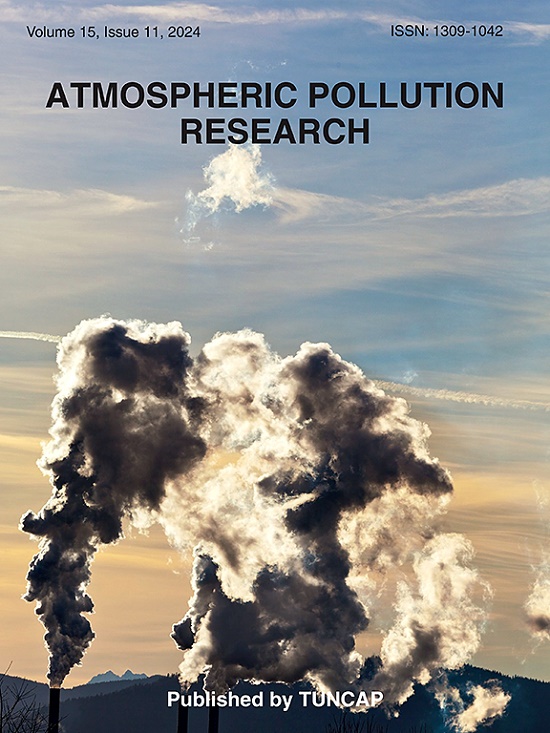Profiles and source apportionment of PAHs in particulate matter from resuspended dust in coal mining areas: Implications for atmospheric pollution
IF 3.9
3区 环境科学与生态学
Q2 ENVIRONMENTAL SCIENCES
引用次数: 0
Abstract
This study collected particulate matter (PM) samples from 20 dust samples in the Zhubai mining area, Linyi City, Shandong Province, China, using a laboratory resuspension particle sampling system. Polycyclic aromatic hydrocarbons (PAHs) in PM2.5, PM10, and total PM (PMtotal) were quantified using GC/MS/MS, identifying 32 aromatic compounds. PAH concentrations decreased in the order of PM2.5 (66.46 ± 43.56 μg/g), PM10 (19.96 ± 10.95 μg/g), and PMtotal (15.13 ± 12.09 μg/g), with levels significantly higher than previous reports in soil/dust systems. PM2.5 and PM10 profiles were similar, dominated by low-ring PAHs like naphthalene and phenanthrene, while high-ring PAHs associated with combustion appeared at very low levels. PMtotal differed markedly, with reduced naphthalene and increased proportions of combustion-related PAHs like fluoranthene, chrysene, and benzo[g,h,i]perylene. The coefficient of divergence (CD) suggested that particle size impacts PAH composition, indicating that distinguishing fine and coarse particles is crucial for accurate pollution assessment. Diagnostic ratio characteristics revealed mixed PAH sources, emphasizing the need to consider local pollution sources for accurate source apportionment. The Positive Matrix Factorization (PMF) model identified three primary PAH sources: coal/coal gangue particles (42.2%), coal/biomass combustion (34.6%), and traffic emissions (23.3%). Surface dust from coal mining areas, influenced by unburned coal and coal gangue, likely significantly contributed to atmospheric particulate matter once resuspended.
求助全文
约1分钟内获得全文
求助全文
来源期刊

Atmospheric Pollution Research
ENVIRONMENTAL SCIENCES-
CiteScore
8.30
自引率
6.70%
发文量
256
审稿时长
36 days
期刊介绍:
Atmospheric Pollution Research (APR) is an international journal designed for the publication of articles on air pollution. Papers should present novel experimental results, theory and modeling of air pollution on local, regional, or global scales. Areas covered are research on inorganic, organic, and persistent organic air pollutants, air quality monitoring, air quality management, atmospheric dispersion and transport, air-surface (soil, water, and vegetation) exchange of pollutants, dry and wet deposition, indoor air quality, exposure assessment, health effects, satellite measurements, natural emissions, atmospheric chemistry, greenhouse gases, and effects on climate change.
 求助内容:
求助内容: 应助结果提醒方式:
应助结果提醒方式:


